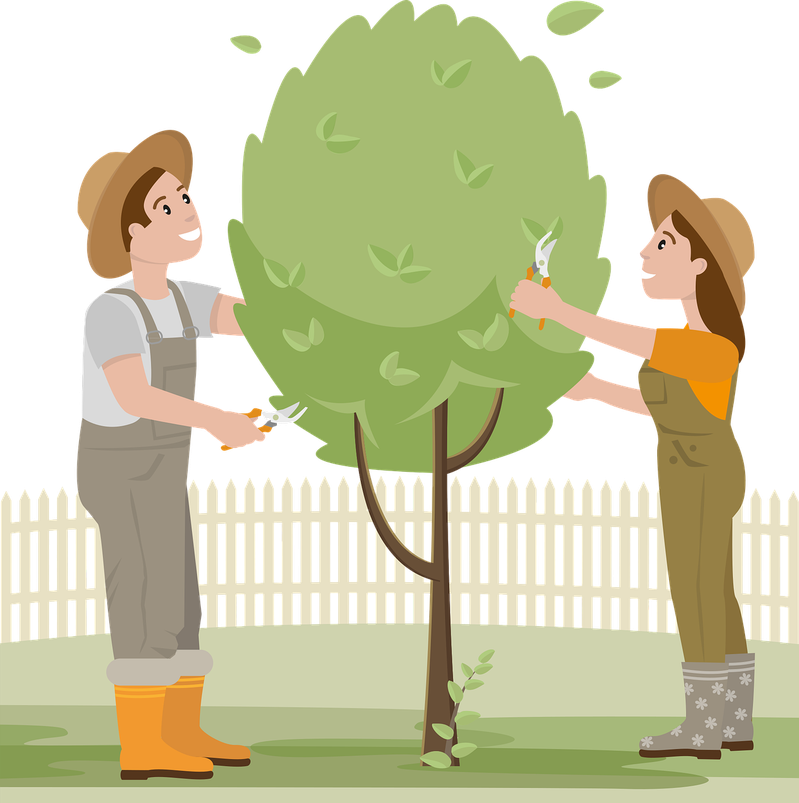Essential Pruning Tools

After your garden is established, even the most low-maintenance designs require some amount of pruning to keep looking good. Here are the pruning tools I recommend every gardener should have in their tool-kit.
Hand Pruning Shears
Also known as Secateurs, these come in 3 different blade designs.
Bypass
Bypass pruners have a similar cutting action as scissors with two blades passing each other as it closes to make a clean cut. Sometimes instead of 2 blades, the pruner has one blade plus a thick jaw on the opposite side to push branches against the cutting blade. These are the most commonly used pruners and every gardener should own one of these. The blade must be kept sharp on these pruners and may need replacing before the tool is worn out so look for a bypass pruner with a replaceable blade.
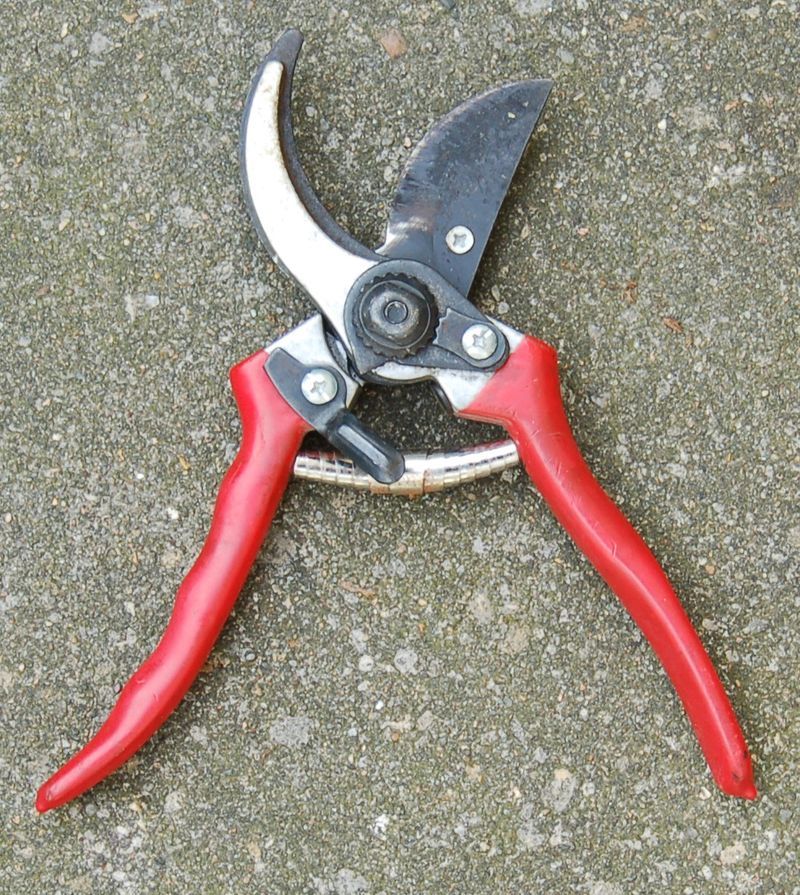
Anvil
Anvil pruners have one blade, that close onto a flat surface. As these crush objects while cutting, they are best used for dead wood on thick branches. Personally, I have rarely used this type of pruner and I would not include this in a list of must-have tools for pruning. It is mentioned here so that you understand how they differ from bypass pruners and do not accidentally purchase one unless you need a pruner for removing excess dead wood.
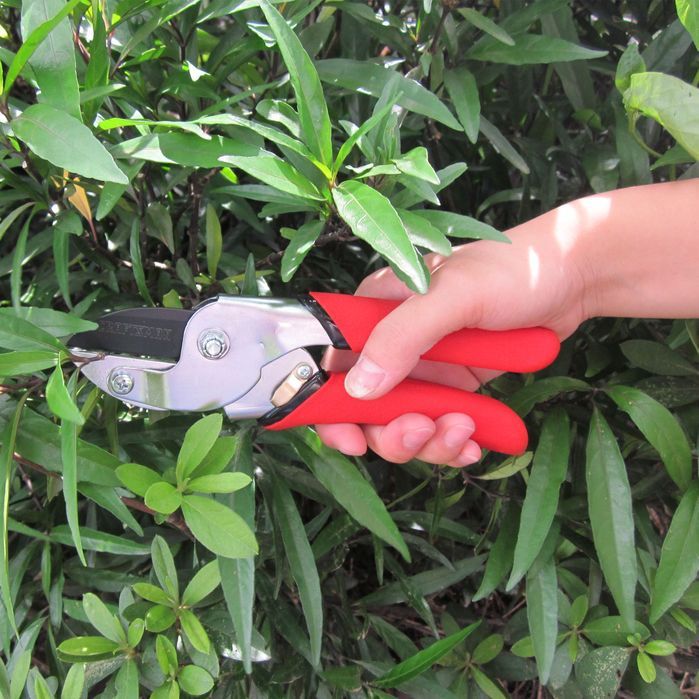
Snips
Snips look like small scissors and cut just like a pair of scissors. These are useful if you need to cut very thin flower stems on small perennials or annuals such as Yarrow or native wildflowers. Bypass pruners tend not to make very clean cuts as the thin stems often just fold between the blades and/or jaw of the tool.
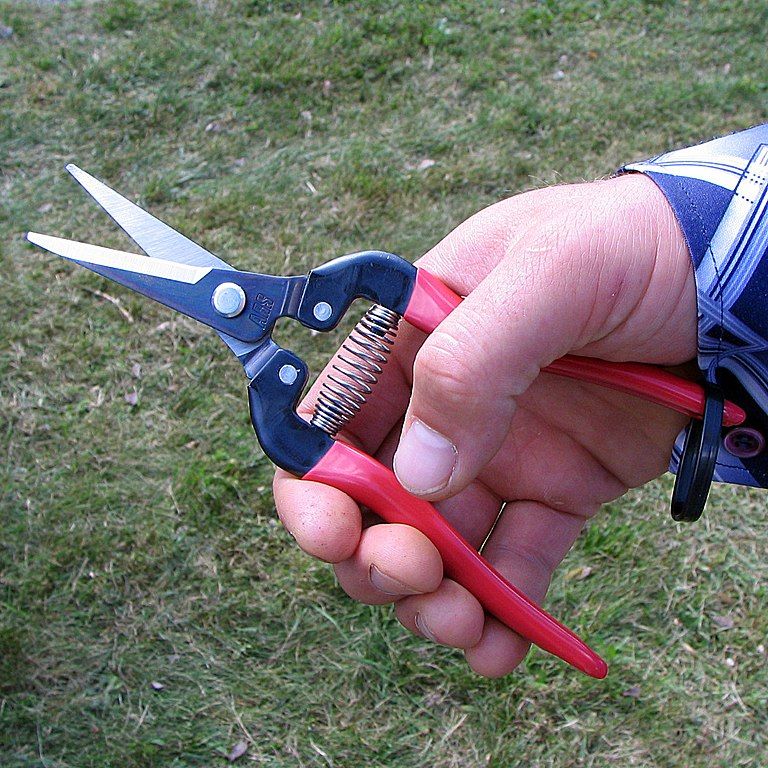
Loppers
For cutting large branches over 1/2" (1.75cm) in thickness, you will need to use a lopper. Loppers cut the same way as shears and can be found with anvil or bypass blades. The key difference is that they have longer handles that allow you to use both arms to increase to cutting force. Some loppers (as seen below) also feature gears that will ratchet the cutting blade as you press it together to make it easier to cut the branch. As with shears, when using a bypass lopper you will want to make sure the cutting blade is on top of the branch you are cutting. Loppers can be used to cut branches that are upto 3" (7.5cm) thick.
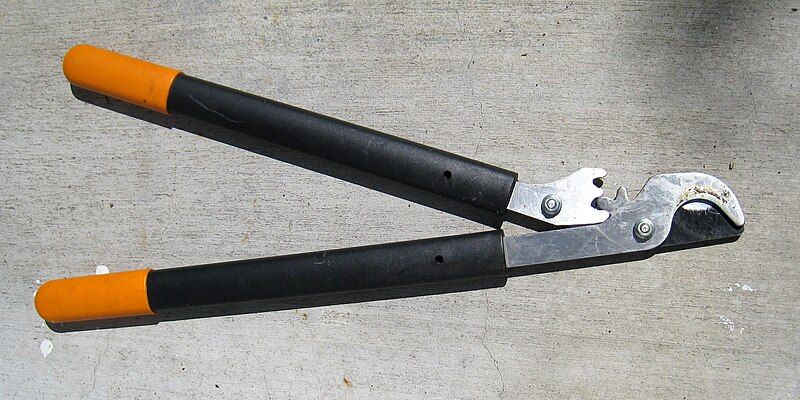
Pruning Saws
If you have any large trees or shrubs with branches thicker than 3" (7.5cm), you will need to use a pruning saw to work on these. Pruning saws operate just like carpentry saws where they have a serrated edge that cuts when pulled. Pruning saws will typically have a curved form to make it easier to cut round objects and an ergonomic handle to minimize fatigue.
Folding Saw
A folding saw is the main saw that I use for pruning as it is easier to carry around with me while I work in the garden, and allows me to easily place in a pocket when I am not using it. These are good for cutting branches that are within arm's reach but for higher branches, you will need a pole saw.
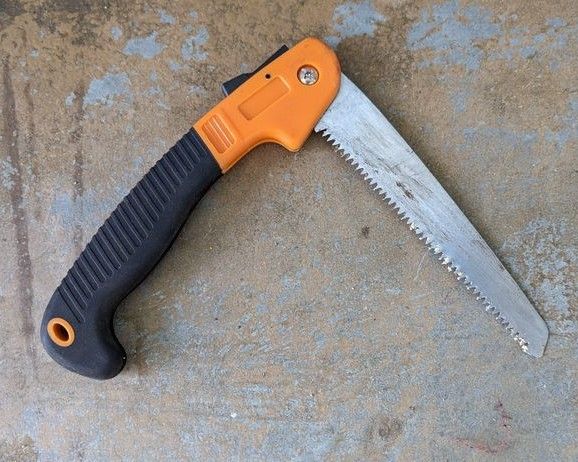
Pole Saw
Pole Saws feature a similar blade to a regular pruning saw, but they are attached to a telescoping pole, allowing you to cut branches up to 15ft (4.5m) overhead. Most pole saws will also feature a small pruning blade next to the saw for cutting smaller branches. This blade is operated from below using a rope to pull the blade to chop the branch. When using a pole saw, branches should be cut in two motions: first make a cut further away from the trunk to remove most of the branch, and then cut closer to the trunk for the final section. Doing it this way prevents tearing caused by the weight of the branch before the cut is completed.
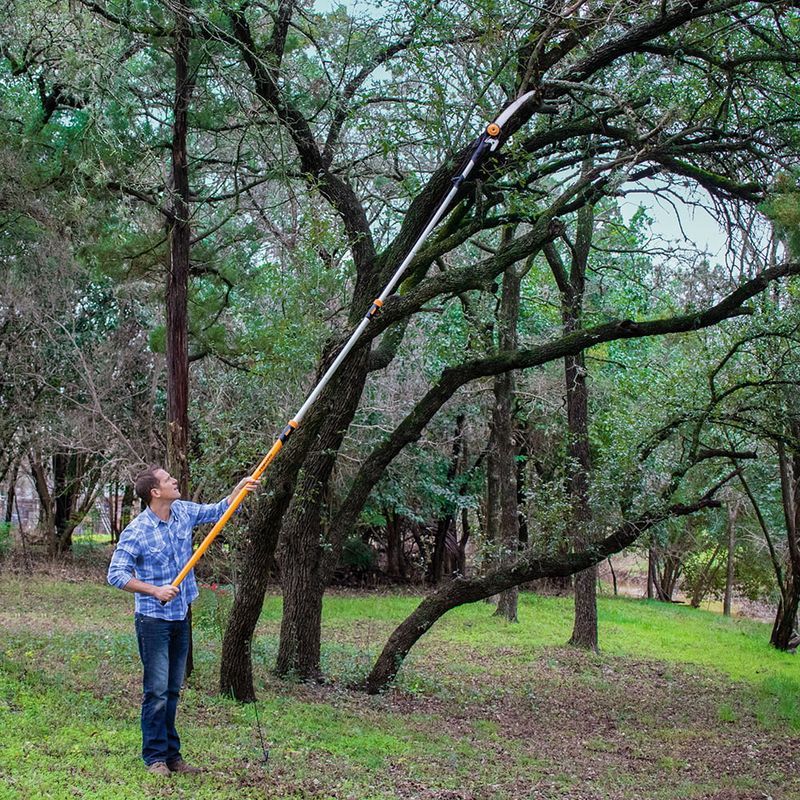
Power Tools for Pruning
Most gardeners can make do without using power tools in the garden, however if you have a lot of hedges, vines or tall trees/shrubs, you may want to invest in some of these power tools:
Hedge Trimmer
Although hedges can trimmed with a pair of large shears, I find that an electric hedge trimmer is a better tool to use for this task as it can be very laborious to do manually with little difference in quality. The only time I recommend manual shears is when you require some precision in the case of topiary gardening. For taller plants, there are versions that use poles to extend their reach. I recommend paying the extra cost for a cordless version as it is very easy to accidentally cut the electrical power cord while using it.
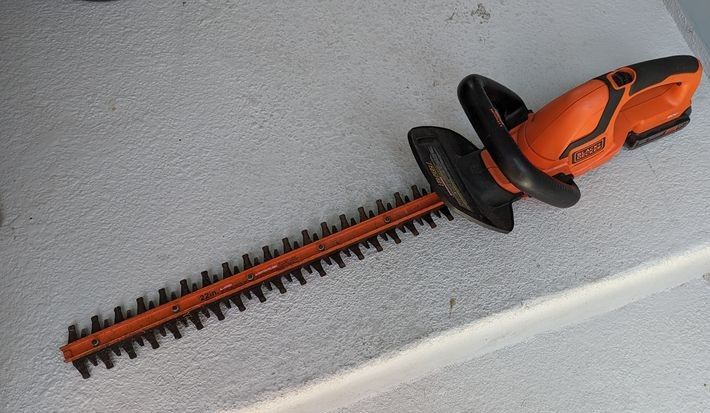
Sawzall
Sawzall is the brand name of a reciprocating saw, and is the most common name for this type of tool in United States. As the name suggests, these saws can cut through a lot of different types of material. These types of saws can be tricky to use with precision so I only use them when any form of plant demolition is required, such as chopping down a large shrub. When removing a large shrub this can be used to quickly cut the large branches off and into smaller pieces and also to cut roots. When planting, this tool is handy for quickly cutting roots that may be in your way. As the cuts are difficult to make cleanly, I do not suggest using one of these for pruning a plant or tree that you want to keep in your garden.
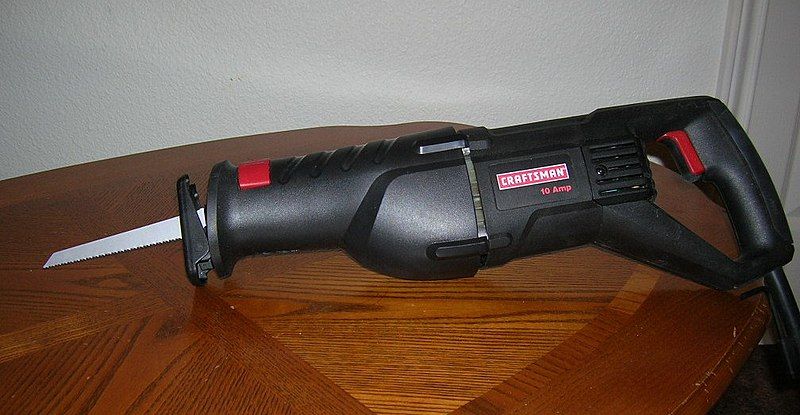
Power Pole Saw
A power pole saw is like a manual pole saw except that the actual saw is more like a mini-chainsaw. These are heavier than manual pole saws so they cannot be extended as far, but for lower hanging branches, they will make short work of cutting these off. While this can save time and prevent forearm fatigue, the cuts tend not to be as clean as when made with a manual pole saw, so I limit the use of this to trees in the background of a landscape where the cuts will not be as visible. Power Pole saws are heavier than their manual counterparts and this limits the length they can extend, so you may not always get as much reach. It is a good idea to use a manual pole saw for your first few tree trimming projects so that you can get a feel for how to make clean cuts before you start using a power pole saw.

Power Pole Saw
Pruner Maintenance
With all these types of pruning tools, it is important to keep them clean and sharp. Loppers and shears can be sharpened using "pocket sharpeners" that are used by campers and backpackers. I keep one of these in my tool bag and use it before each pruning task. The blades on these tools should be kept clean to prevent cross-contamination of bacteria or viruses between plants. Always sterilize the blade before moving from one plant to another when pruning. Rubbing alcohol is a good sterilizing solution to use. The pruners should also be kept well lubricated by applying oil to the spring and pivot points. Saw blades should also be sterilized in the same way but their alternating teeth make it difficult to sharpen so its often easier to replace the blade when it becomes too dull.
